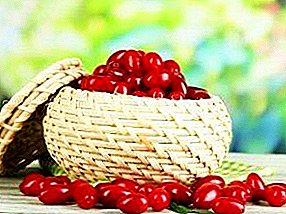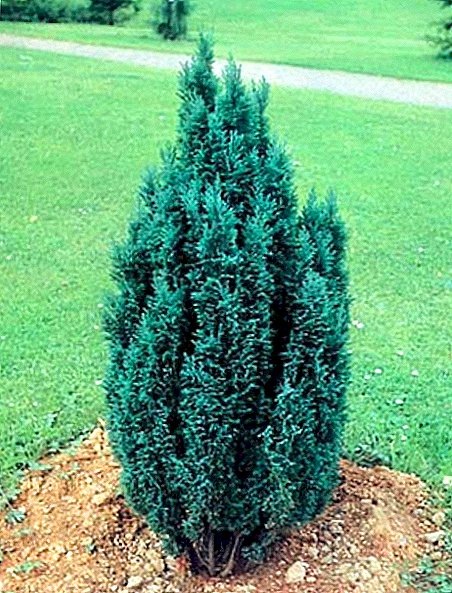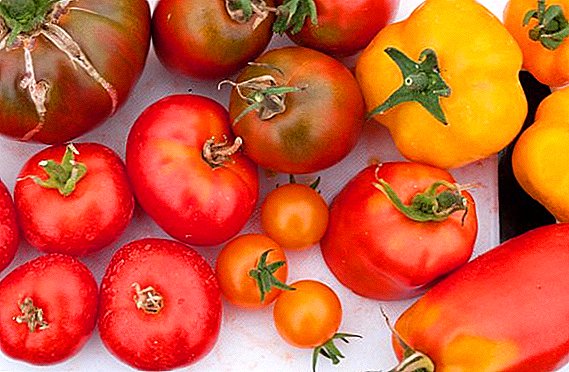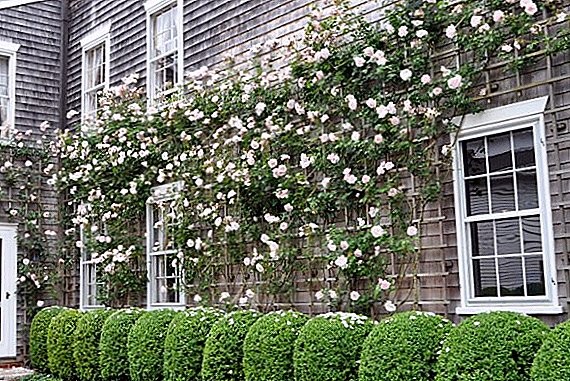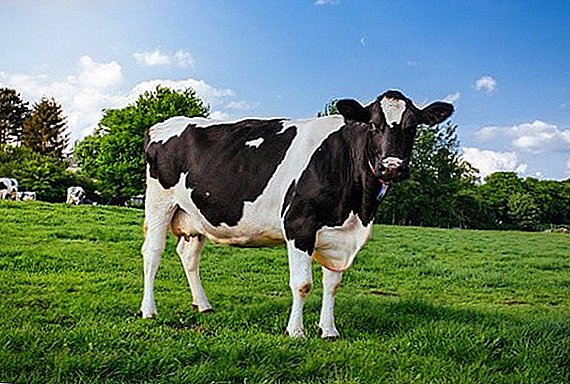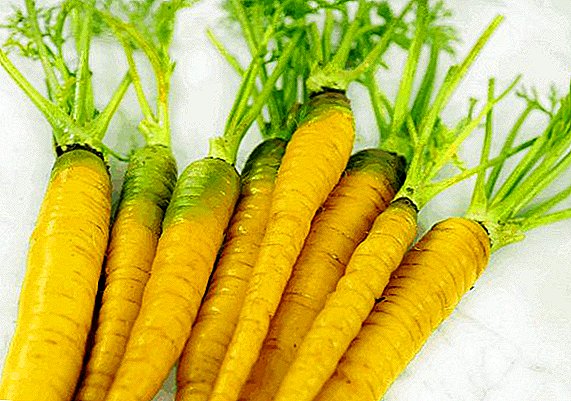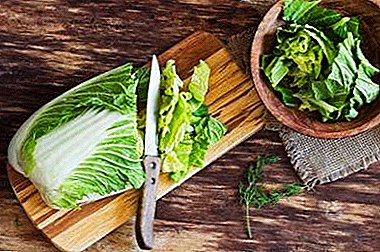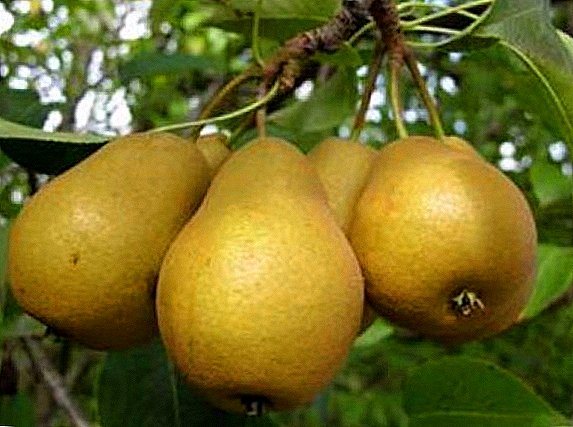 Summer is the season of harvests and generous gifts of nature. It is at this time that we try to enjoy the great taste of fruit. And if they are grown with their own hands, the pleasure increases many times. Therefore, breeders are trying to bring the most unpretentious and fruitful varieties. And one of such gifts to gardeners was a pear variety "Alenushka" ("Thumbelina"), the description of which we present further.
Summer is the season of harvests and generous gifts of nature. It is at this time that we try to enjoy the great taste of fruit. And if they are grown with their own hands, the pleasure increases many times. Therefore, breeders are trying to bring the most unpretentious and fruitful varieties. And one of such gifts to gardeners was a pear variety "Alenushka" ("Thumbelina"), the description of which we present further.
Selection
Pear "Thumbelina" - the creation of Russian breeders. It was obtained at a leading research institute of Russia by crossing interspecific hybrid number 9 ("Bere winter Michurina") with southern varieties ("Forest Beauty", "Josephine Mechelnskaya", "Triumph Zhoduani", "Anjou Beauty", "Duchesse Angouleme", " Winter Dean "," Cure "," Saint-Germain "). Led the project Yu.A. Petrov and N.V. Yefimov.
In the late 90s, the variety was submitted for state testing, after which it was recommended to grow it in the Moscow and adjacent regions and in the Central region of Russia.
The name of the variety was due to the small size of the fruit and the tree itself. 
Did you know? In the 17th century, the fruit of a pear was called oily fruit because of its soft structure.
Description and distinctive features of the variety
Representatives of any culture are similar to each other and ignorant people seem to be the same. But in fact, varieties have their differences.
Wood
Pear "Thumbelina" - weak low (up to 1.5 meters) deciduous tree with sparse, rounded, slightly drooping crown.
The branches are medium brown-brown, depart from the trunk at a right angle.
The foliage is medium in size, smooth, with slightly raised serrated edges. In spring, the tree blooms with tiny snow-white double-headed terry flowers.
The trees begin to bear fruit only for 6-8 years. 
Fruits
The fruits of this variety are relatively small - on average 50-60 g. The shape is short-papillary. During ripening pears become golden yellow, the main part of the surface is of a fuzzy crimson-red hue.
The skin of a ripe pear is thin, smooth, with slightly noticeable subcutaneous specks.
We advise you to get acquainted with such varieties of pears as: "Tenderness", "Rossoshanskaya dessert", "Century", "Chinese pear", "Krasulya", "Bergamot", "Just Maria", "Elena", "Forest Beauty", "Nika "," In memory of Yakovlev "," Children's "," Avgustovskaya dew "," Chizhovskaya "," Ussuriyskaya "," Veles "," Talgar beauty "," Rogneda "and" Otradnenskaya ".
For the pulp of ripe fruits are characterized by such indicators as:
- juiciness;
- tenderness;
- aroma;
- light oiliness;
- delicate cream color.
 Ripe fruits of the dessert type, have an incredibly sweet taste, without pronounced acidity.
Ripe fruits of the dessert type, have an incredibly sweet taste, without pronounced acidity.Important! Pears "Thumbelina" get sweetness even during rainy, cool summer.
After harvesting pears can be stored on average a month and a half. As much as possible, fruits retain their appearance in the refrigerator, cellar or other cool place for up to 113 days, i.e. You can feast on juicy fruits until mid-January.
In terms of ripening pear "Thumbelina" refers to mid-season - the crop is removed in autumn, in September. At this time, they easily move away from the branches and even begin to crumble.
The harvest is average, but regular - on average, adult trees yield 172-175 centners per hectare.
Did you know? In Russia, the pear was called "pear". Historians suggest that this name arose due to the characteristic crunch when biting fruit.
How to choose the seedlings
In order for the tree to stick well, it is important to be able to choose the right planting specimens. Do it better in specialized stores or nurseries. It should be one or two year old seedlings with developed roots. It also needs to pay attention to the aboveground part: it must be intact, without visible damage. If there are leaves on the tree, they need to be removed, because they speed up the drying process of the plant.
Seed bark should be smooth and supple. Shriveled bark says that the seedling is already drying out. In addition, there should be 4-5 branches on the trunk.
Choosing a place on the site
The pear grows only on fertile, loose soil with deep groundwater. The optimum acidity is neutral. In addition, the area on which it is planned to grow a pear should be sunny and protected from the wind.
Important! On poor, with high acidity and wet soil, the pear is hard to adapt and often refuses to bear fruit.
Since the pear "Thumbelina" is self-productive, it needs pollinators - other varieties of pear trees.
Preparatory work before landing
The plot on which you plan to plant a pear, cleaned from weeds and dig.
For planting seedlings prepare pits 80 cm deep and about a meter wide. Stepping back 30 cm from the center, a stake is driven into the hole, which will then support the tree and allow it to grow properly.
In each hole make a mixture of a small amount of earth, 8-10 kg of compost or rotted manure, superphosphate (50 g), potash salt (30 g). 
Step-by-step process of planting seedlings
Seedlings are planted in the fall, and better in the spring, then the root system will have time to take up and gain strength before the onset of cold weather. If the planting was carried out in the fall, the cuttings are planted so that they can transfer the frost, completely covered by a snow cap.
So, the process of planting is not so complicated: a cutting is installed in the prepared hole and the ground is added there, constantly shaking the seedling itself.
The basal neck after planting should rise 6-8 cm above the ground. After that, the earth is densely trampled and watered with 2-3 buckets of water.
The trunk of the tree is tied to a peg and at the end mulch the soil. At the same time it is necessary to ensure that the mulch does not touch the very trunk of the tree. If several trees are planted, the distance between the seedlings should be such that the grown trees do not interfere with the vegetative processes of each other. As a rule, the distance is equal to the number of mature trees, but must be at least 4 meters.
Did you know? Before tobacco came to Europe, dried and crushed pear tree leaves were smoked there.
Seasonal care features
In order for a pear to be healthy and pleased with its productivity for many years, it is necessary to adhere to certain rules and carry out simple measures to care for it.
Soil care
The choice of the right place, of course, is an important factor, but a certain care is needed for any soil:
- The earth around the tree should be constantly loose (loosened to a depth of about 10 cm).
- It is necessary to water a tree regularly. Norm - 2-3 buckets per 1 square. meter zone. For young trees, the rate of watering is 1 bucket.
- Of course, the land should not contain weeds.
- To protect the crop from weeds and preserve moisture, the soil needs to be mulched. Peat, manure, and compost are excellent as mulch. The ideal coating layer is 6-8 cm.

Top dressing
To harvest a good harvest, the soil must be fertilized. For this, the first 4 years several times per season nitrogen-containing supplements (urea, chicken droppings, saltpeter) are introduced into the soil.
Important! Nitroammofosk, introduced into the soil in spring, will help activate the vegetative processes.
In July, the plant can be fed with phosphorus and potassium using foliar method.
In winter, the pear also needs to be fertilized. To do this, use a mixture of potassium chloride (1 tbsp. Spoon) and granular superphosphate (2 tbsp. Spoons), diluted in ten liters of water.
From the fifth year of a tree’s life, fertilizers are introduced into grooves specially dug around the perimeter of the crown. 
Preventive treatment
Although this variety is quite resistant to infection and pest attacks, it is still necessary to do without preventive treatment of trees. Work on the prevention of diseases in the spring. This helps well:
- "Drug-30" (treated immediately after the snow melted);
- "Atom";
- "Binomial";
- Zolon;
- "Landing";
- "Terradim".

Pruning
To maintain health and good fruiting pear "Thumbelina" should be regularly pruned. The timely removal of excess branches will also allow you to create a more durable skeleton of the trunk that is able to withstand a rich harvest.
It is necessary to cut and trim the pear during the rest period, 2-3 weeks before the beginning of the growing season or in the autumn, after harvesting. At the same time, patients and dry branches are cut off and thinned out the crown.
The cut sections after the trimming procedure are treated with crushed coal or garden pitch. 
Protection against cold and rodents
Pear "Thumbelina" is characterized by such characteristics as winter hardiness. The trees tolerate even the most severe winters with frost down to -38 ºC. Spring frosts after the thaw also do not threaten this pear (tolerates -25 ºC).
But no matter how well the tree tolerates the cold, it is better to cover it in the fall with material that will save both rodents and frost. Branches of raspberry, hawthorn, juniper and fir spruce branches are used as shelter. Good protect the trunk of reeds or sunflower.
Important! Under natural shelter bark during thawing will not be sub-heating.
Sheltering trees before the arrival of the first serious frosts. At the same time, the lower zone of the trunk is also taken care of, by scooping the surface from the neck superficially. They wrap a tree around the trunk, placing the material just below the ground level and then, scooping the edges along the edges. If it is used, it is placed down with needles.
Roofing material or roofing felt can be used. But at the same time the trunk is pre-wrapped with hessian or other breathable material.  In the spring shelter is removed.
In the spring shelter is removed.
As you can see, in order to enjoy delicious juicy pears from your own garden you do not need encyclopedic knowledge and experience. "Thumbelina" is so unpretentious that over the years it will delight the hosts with its harvest.


